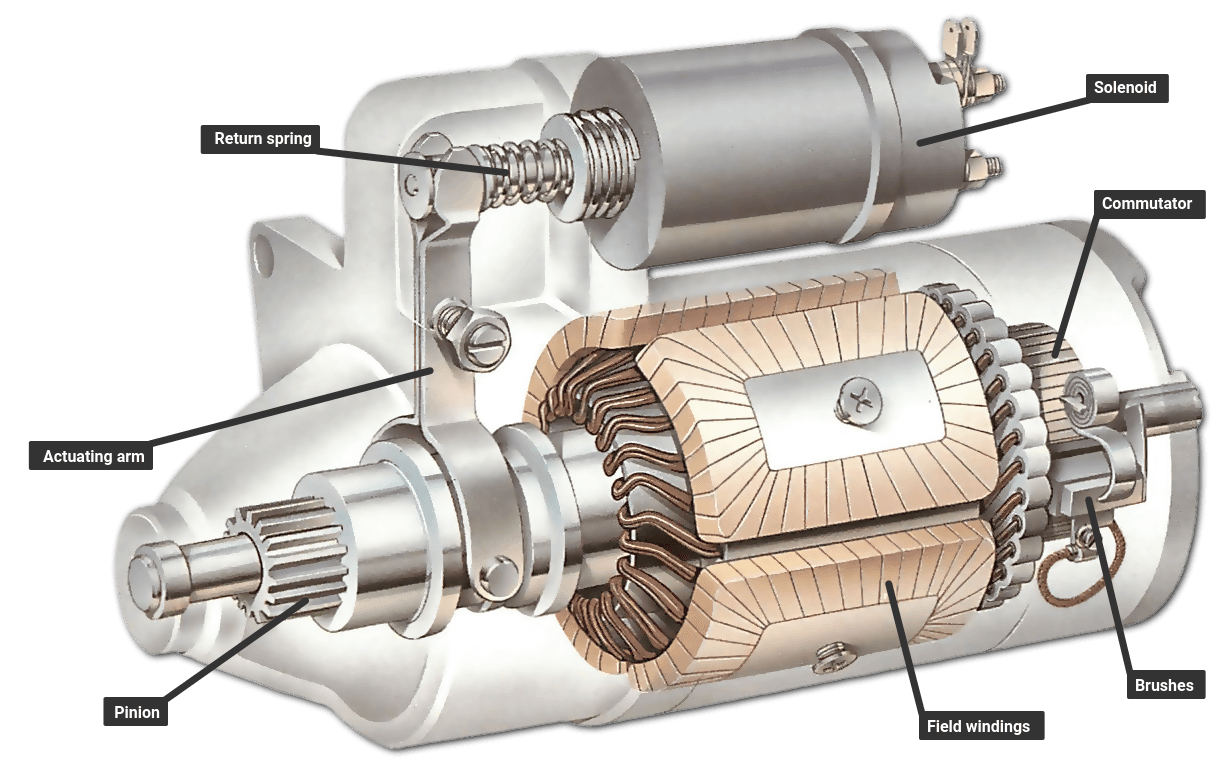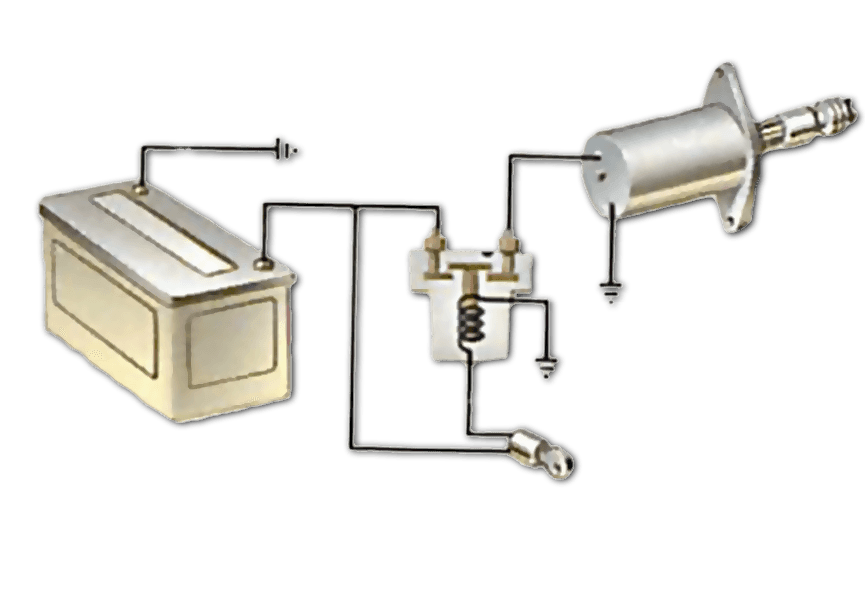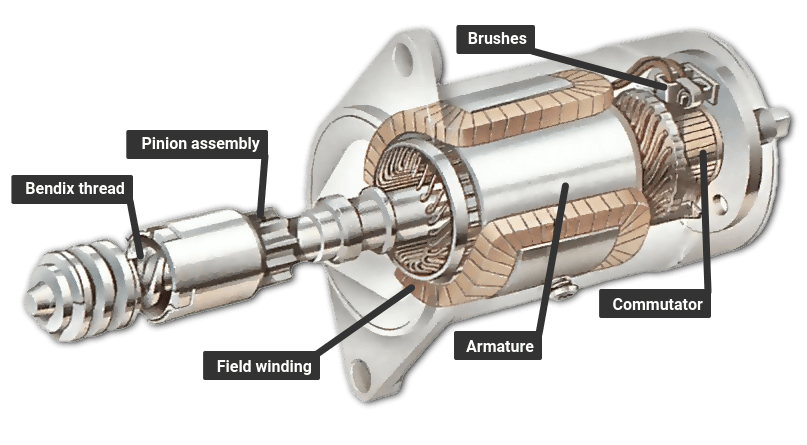How the starting system works
The Video Course teaches you everything about modern cars.

To make an engine start it must be turned at some speed, so that it sucks fuel and air into the cylinders , and compresses it.
The powerful electric starter motor does the turning. Its shaft carries a small pinion ( gear wheel) which engages with a large gear ring around the rim of the engine flywheel .
In a front-engine layout, the starter is mounted low down near the back of the engine.
The starter needs a heavy electric current , which it draws through thick wires from the battery . No ordinary hand-operated switch could switch it on: it needs a large switch to handle the high current.
The switch has to be turned on and off very quickly to avoid dangerous, damaging sparking. So a solenoid is used - an arrangement where a small switch turns on an electromagnet to complete the circuit .

The starter switch is usually worked by the ignition key. Turn the key beyond the 'ignition on' position to feed current to the solenoid.
The ignition switch has a return spring , so that as soon as you release the key it springs back and turns the starter switch off.
When the switch feeds current to the solenoid, the electromagnet attracts an iron rod.
The movement of the rod closes two heavy contacts, completing the circuit from the battery to the starter.
The rod also has a return spring -when the ignition switch stops feeding current to the solenoid, the contacts open and the starter motor stops.
The return springs are needed because the starter motor must not turn more than it has to in order to start the engine. The reason is partly that the starter uses a lot of electricity, which quickly runs down the battery.
Also, if the engine starts and the starter motor stays engaged, the engine will spin the starter so fast that it may be badly damaged.
The starter motor itself has a device, called a Bendix gear, which engages its pinion with the gear ring on the flywheel only while the starter is turning the engine. It disengages as soon as the engine picks up speed, and there are two ways by which it does so - the inertia system and the pre-engaged system.
The inertia starter relies on the inertia of the pinion - that is, its reluctance to begin to turn.

The pinion is not fixed rigidly to the motor shaft - it is threaded on to it, like a freely turning nut on a very coarse-thread bolt.
Imagine that you suddenly spin the bolt: the inertia of the nut keeps it from turning at once, so it shifts along the thread of the bolt.
When an inertia starter spins, the pinion moves along the thread of the motor shaft and engages with the flywheel gear ring.
It then reaches a stop at the end of the thread, begins to turn with the shaft and so turns the engine.

Once the engine starts, it spins the pinion faster than its own starter-motor shaft. The spinning action screws the pinion back down its thread and out of engagement.
The pinion returns so violently that there has to be a strong spring on the shaft to cushion its impact.
The violent engagement and disengagement of an inertia starter can cause heavy wear on the gear teeth. To overcome that problem the pre-engaged starter was introduced, which has a solenoid mounted on the motor.
There's more to a car starter system: As well as switching on the motor, the solenoid also slides the pinion along the shaft to engage it.
The shaft has straight splines rather than a Bendix thread, so that the pinion always turns with it.
The pinion is brought into contact with the toothed ring on the flywheel by a sliding fork. The fork is moved by a solenoid, which has two sets of contacts that close one after the other.
The first contact supplies a low current to the motor so that it turns slowly - just far enough to let the pinion teeth engage. Then the second contacts close, feeding the motor a high current to turn the engine.
The Ultimate Car Mechanics video course
Learn everything about modern cars from our new video series.
Learn more >-
We build a Mazda MX5 Miata from scratch
We start by tearing down and then rebuilding the whole car.
-
Every part explained
There's ridiculous detail on every part. Clearly and easily explained.
-
All modeled in 3D
We've created the most detailed 3D model ever produced so we can show you everything working.






